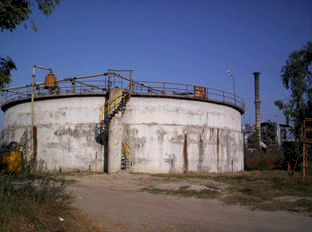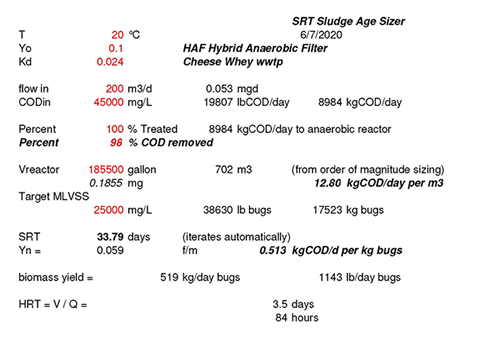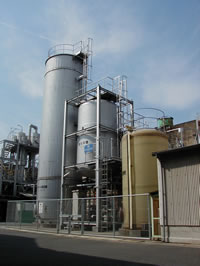

Anaerobic Filters An OnLine Primer Need to know more? Send us an email or feel free to search our online series with our give away search engine: |
Let's calculate an estimate of the solids retention time for a number of anaerobic installations using the iterative formula - all data self-explanatory. Please be aware that these calculations are a simplification of the actual project data. For example, actual solids inventories could be smaller or larger and all other derived magnitudes adjusted accordingly. SRT is thus about ballpark.

In general one would want far more information as regards the application. Say for instance we want to design a high rate system for a starch processing plant. One would ask say
1. What’s the nature of the starch base? tapioca? maize? potato?..other?
2. Are we talking about native starch? Or modified starch production? The latter may lead to toxicity for an anaerobic system.
3. What’s the TSS contents of the waste water?
4. What is the minimum and maximum temperature of the waste water stream? For instance 20°C would be too low for a high rate anaerobic treatment without pre-heating of the waste water.
Water hyacinths are around 90 to 95% water, so 50 TPD wet weight would only be 2.5 to 5 dry tons. Anaerobic digestion of 2.5 MT dry hyacinths would be somewhat equivalent to 2,500 kg of COD, which would produce at best around 400 m3 of methane per day (or 14,000 ft3/day), which would equal about 12,600 BTU or 12,000 kilojoules of energy. This translates to 12,000 * 0.2778 = 3.3 KWH. In the U.S, this quantity of methane gas could be purchased for approximately 40 US$/day. At this small scale, one doubts this small amount of gas would be worth building a digester with mixing, followed by capturing and cleaning the biogas, and installing a boiler. Further, after digestion, you probably would have only about 750 kg of biosolids (@ 30% COD to biomass yield), and you would need to dry the solids for sale and the liquid would contain most of the nutrients, and the salt content would be increased because of the need to add alkalinity for pH control in the digester. Therefore, if you want to capture the hyacinth solids for use as organic fertilizer, composting could perphaps be a better option. You probably would need to use some type of bulking agent such as sawdust that would allow maintaining porosity in the compost bed and maintain proper amounts of moisture.
The justification for using or not using anaerobic digestion depends on a number of factors such as:
- Recovering methane as a fuel or fuel supplement. As indicated before, the fuel value depends on a number of local factors such as high costs for methane gas. This is the reason we see more biomass to energy plants in Europe than in the U.S.
- Solids reduction to avoid transportation and landfilling costs. Would suspect this is not a valid objective.
- Generating a reusable solid residue, which is not likely with treating water hyacinths.
- To offset wastewater treatment and sludge disposal costs.
